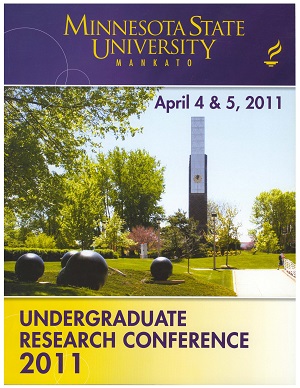Modeling the Spread of Johne's Disease in Cattle and the Effects of a Hypothetical Vaccine
Location
CSU 204
Start Date
4-4-2011 11:00 AM
End Date
4-4-2011 12:30 PM
Student's Major
Biological Sciences, Mathematics and Statistics
Student's College
Science, Engineering and Technology
Mentor's Name
Namyong Lee
Mentor's Department
Mathematics and Statistics
Mentor's College
Science, Engineering and Technology
Description
Mycobacterium avium subsp. paratuberculosis, (Mpt) is the causative organism of Johne's disease, a mycobacterium infection of the small intestine of cattle, causing emaciation and eventually death. Unfortunately, Mpt is only detectable in the latter stages of Johne's disease, allowing the infection to spread to the herd. Dairy farmers must take preventative measures to ensure the disease does not grow unchecked. Infected animals must be removed from the herd and disposed of properly. This is caustic because the effects of Johne's disease include: the premature killing of exposed and infected livestock, decreased milk production, loss of marketing opportunities, possible breeding problems in infected animals, and veterinary costs. It has been estimated that every year in the United States the total losses caused by Johne's disease exceed 1.5 billion dollars. Since this disease currently has no vaccine, biosecurity procedures are the primary method cattle farmers use to control the spread of infection. In an effort to determine how fast a disease like Johne's can spread within a population, a compartmental model was developed. The purpose of this research attempted to model the spread of Mpt in cattle, and introduces a "vaccine effectiveness" variable. The goal was to determine if there was a level of vaccine effectiveness that would encourage the development of a vaccine, and if there is a way to contain the spread of disease. To reinforce the findings, two other diseases which have a vaccine were analyzed for comparison purposes these models helped better construct the model specifics for Mpt.
Modeling the Spread of Johne's Disease in Cattle and the Effects of a Hypothetical Vaccine
CSU 204
Mycobacterium avium subsp. paratuberculosis, (Mpt) is the causative organism of Johne's disease, a mycobacterium infection of the small intestine of cattle, causing emaciation and eventually death. Unfortunately, Mpt is only detectable in the latter stages of Johne's disease, allowing the infection to spread to the herd. Dairy farmers must take preventative measures to ensure the disease does not grow unchecked. Infected animals must be removed from the herd and disposed of properly. This is caustic because the effects of Johne's disease include: the premature killing of exposed and infected livestock, decreased milk production, loss of marketing opportunities, possible breeding problems in infected animals, and veterinary costs. It has been estimated that every year in the United States the total losses caused by Johne's disease exceed 1.5 billion dollars. Since this disease currently has no vaccine, biosecurity procedures are the primary method cattle farmers use to control the spread of infection. In an effort to determine how fast a disease like Johne's can spread within a population, a compartmental model was developed. The purpose of this research attempted to model the spread of Mpt in cattle, and introduces a "vaccine effectiveness" variable. The goal was to determine if there was a level of vaccine effectiveness that would encourage the development of a vaccine, and if there is a way to contain the spread of disease. To reinforce the findings, two other diseases which have a vaccine were analyzed for comparison purposes these models helped better construct the model specifics for Mpt.
Recommended Citation
Edwinson, Adam and Kirsten Amberg. "Modeling the Spread of Johne's Disease in Cattle and the Effects of a Hypothetical Vaccine." Undergraduate Research Symposium, Mankato, MN, April 4, 2011.
https://cornerstone.lib.mnsu.edu/urs/2011/oral-session-05/2



